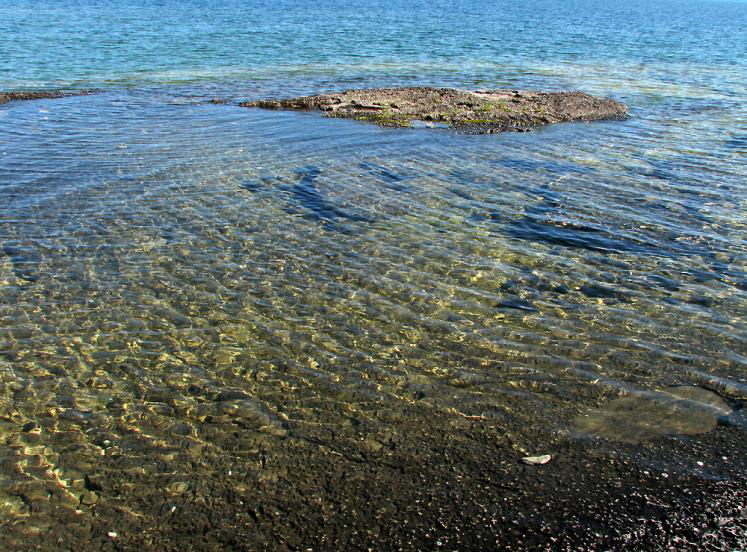MANITOULIN – Lake Huron is five degrees warmer than average for this time of year, according to data from the National Oceanic and Atmospheric Association’s (NOAA) Great Lakes Environmental Research Laboratory. Water level and water temperatures are important and interrelated indicators of weather and climate change in the Great Lakes. While water levels can be influenced by many factors that include precipitation, snowmelt runoff, evaporation rates or drought, water temperatures are primarily affected by air temperature.
“Water temperatures naturally fluctuate just like lake levels naturally fluctuate,” says Hannah Cann, coastal stewardship co-ordinator with the Lake Huron Centre for Coastal Conservation, “but what we’re seeing now is warmer temperatures across all the Great Lakes on the whole including, of course, Lake Huron.”
This is an indication of climate change. “When water temperatures change drastically in a short period of time it can also affect the reproductive abilities of certain fish,” says Ms. Cann. “Just like certain animals, chickens for example, they need so many hours of light to go into their reproductive phase and create eggs. The same thing happens with fish and with some species at risk fish, like lake sturgeon, their eggs will only be viable within a 2° to 3°C range.”
This means these temperature fluctuations won’t trigger their reproductive systems to begin laying eggs or to go into mating season. It might actually kill off some species’ eggs, she adds. Monitoring lake temperatures is thus important to tracking species in certain coastal environments. “This high 5°C change, it’s 5° higher than average for this time of year. This is indicative of a warming climate and can have serious consequences to these fish communities that rely on coastal wetlands and the nearshore environments to spawn.”
A 2016 report from the United States’ Environmental Protection Agency stated that, “since 1995 the average surface waters have increased slightly for each of the Great Lakes. Recent increases in water temperature have mostly been driven by warming during the spring and summer months.” Trends could also relate in part to earlier thawing of winter ice; these are all indicative of a warming climate.
Altered spawning cycles are only one aspect of Great Lakes biodiversity affected by increased lake temperatures. The range distribution of species can be altered; this in turn can lead to the introduction of novel species into to ecosystem and impact the food chain within the lake. There have been some suggestions that warmer temperatures can possibly lead to an increase in the prevalence of waterborne pathogens which could lead to more and more frequent beach closures or algal blooms.





